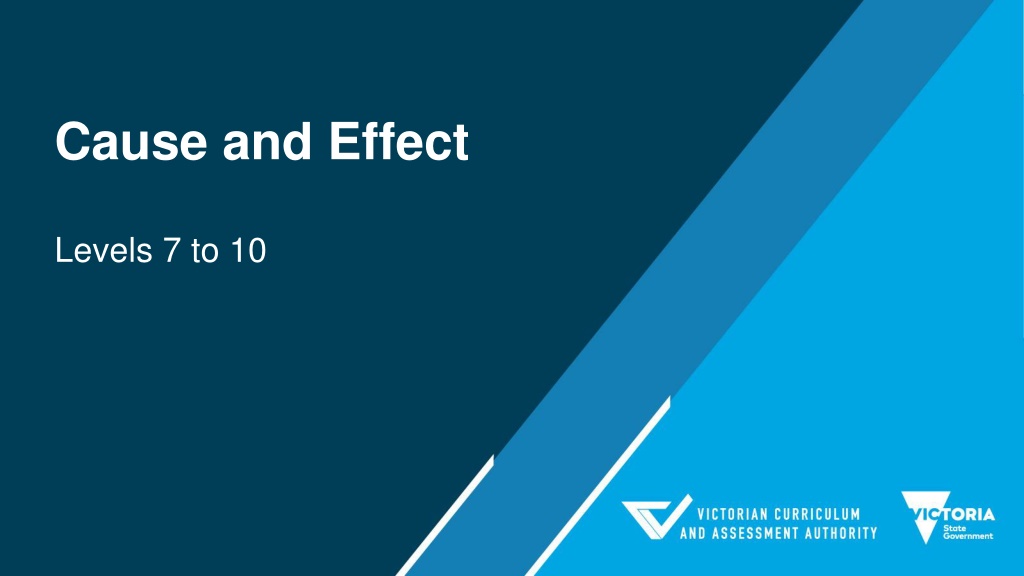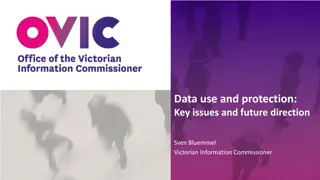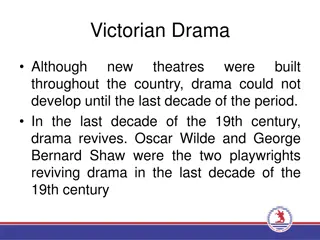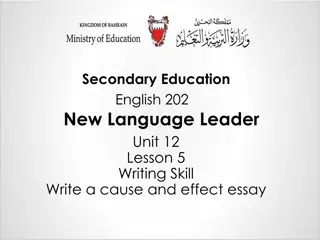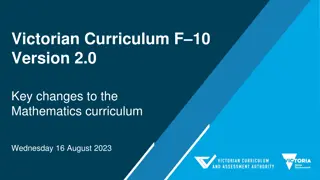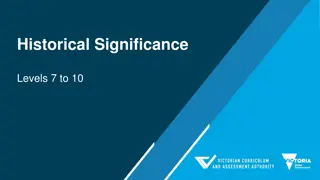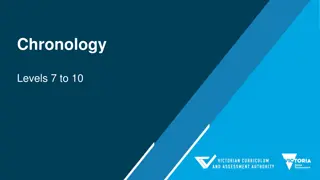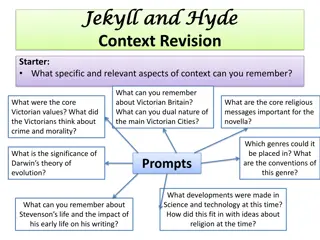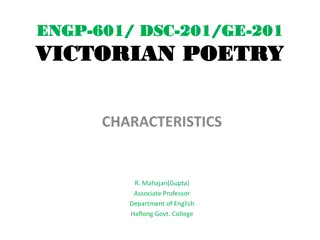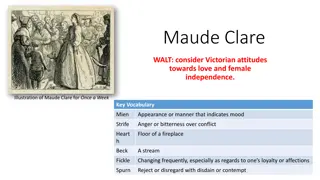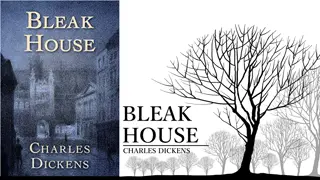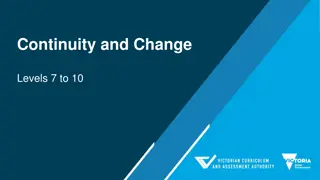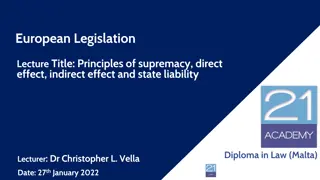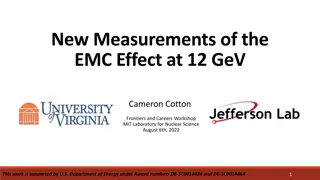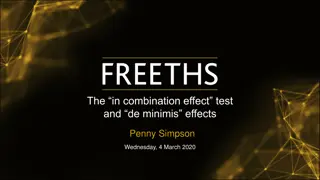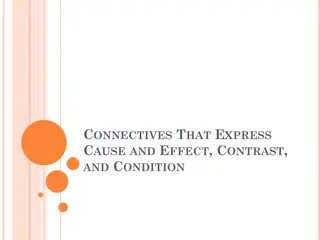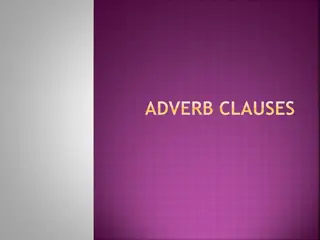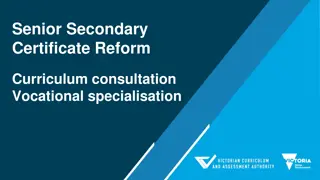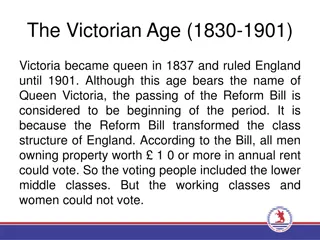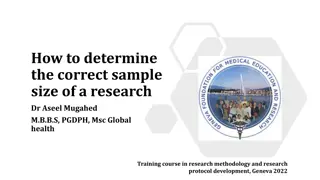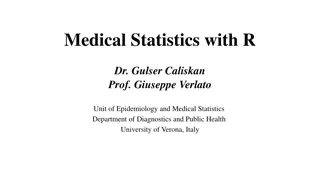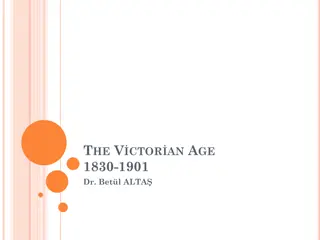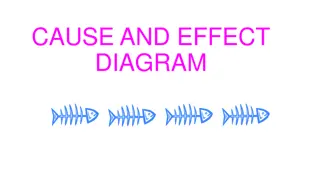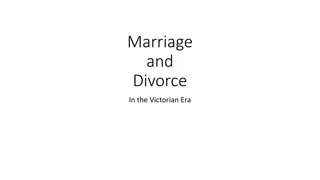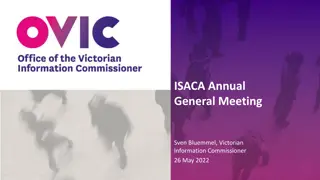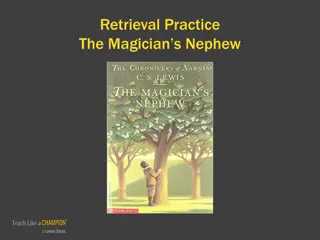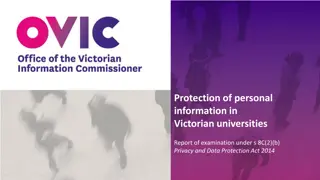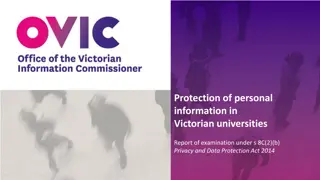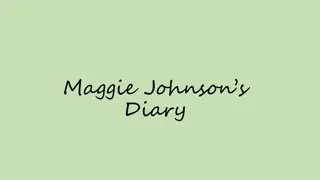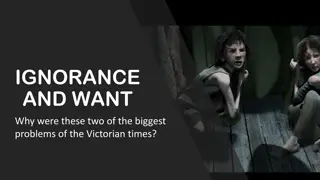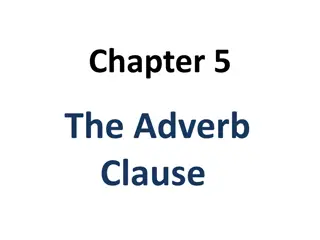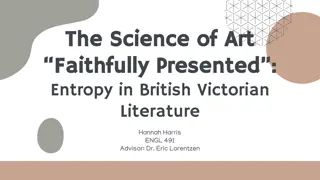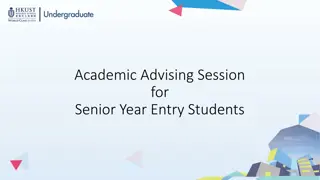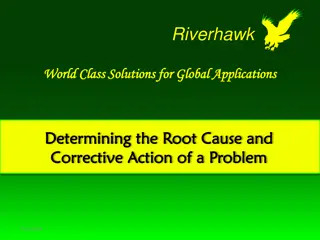Unraveling Cause and Effect in Victorian Curriculum History
Delve into the intricate web of cause and effect in history, exploring how events are interlinked and influenced by various factors. Discover how students analyze patterns of change and continuity, identify different causes, and evaluate the significance of individuals and groups in shaping historical events. The Victorian Curriculum emphasizes the importance of understanding the complexities of history to gain insights into the past.
Download Presentation

Please find below an Image/Link to download the presentation.
The content on the website is provided AS IS for your information and personal use only. It may not be sold, licensed, or shared on other websites without obtaining consent from the author. Download presentation by click this link. If you encounter any issues during the download, it is possible that the publisher has removed the file from their server.
E N D
Presentation Transcript
Cause and Effect Levels 7 to 10
Introduction Provocation Cause and Effect the curriculum context Cause and Effect in Victorian Curriculum History Cause and Effect in the continuum of learning Towards the classroom Examples of practice Conclusion
History does not happen through a series of events acting on each other in a linear chain leading to an ultimate event. Nor does history happen through a series of factors acting in isolation towards a key event. History as it happens is an infinitely tangled web of cause and effect, or reinforcement and negation. Events are of course multi-causal, but also multi-consequential. James Woodcock, Does the linguistic release the conceptual?
Cause and Effect in Victorian Curriculum History
Victorian Curriculum History Learning in History Achievement Standard Skill/Concept Historical Knowledge
Learning in History Students identify chains of cause and effect to examine how and why things happened in the past. In so doing, they identify different kinds of causes, including social, political, economic, short-term catalysts or triggers and long-term trends. They may organise causes and effects using chronology and examine the role of individuals and movements in shaping, promoting and resisting change. Narratives are a good starting point for identifying significant causes. Students can use timelines to map and organise events, people, ideas, movements and turning points to identify links between causes and effects and to distinguish between long- term (trends) and short-term (triggers) causes of events. Victorian History Curriculum, Leaning in History: Analysing Cause and Effect
Achievement Standard Levels 7 and 8 Achievement Standard By the end of Level 8, students identify and explain patterns of change and continuity over time. They analyse the causes and effects of events and developments. They identify the motives and actions of people at the time. Students evaluate the significance of individuals and groups and how they were influenced by the beliefs and values of their society. Levels 9 and 10 Achievement Standard By the end of Level 10, students refer to significant events, the actions of individuals and groups, and beliefs and values to identify and evaluate the patterns of change and continuity over time. They analyse the causes and effects of events and developments and explain their significance. They explain the context for people s actions in the past. Students evaluate the significance of events and analyse the developments from a range of perspectives.
Historical Concepts and Skills: Cause and Effect Levels 7 and 8 Levels 9 and 10 Analyse the long term causes, short term triggers and the intended and unintended effects of significant events and developments (VCHHC127) Analyse the causes and effects of significant events that caused change and/or a decline over the period (VCHHC103)
Connections Cause and Effect connects with: other Historical Concepts and Skills instructional terms. Levels 7 and 8 Analyse the causes and effects of significant events that caused change and/or a decline over the period (VCHHC103)
Connections: your turn Levels 9 and 10 Identify: other Historical Concepts and Skills instructional terms. Analyse the long term causes, short term triggers and the intended and unintended effects of significant events and developments (VCHHC127)
Continuum of learning Levels 5 and 6 Levels 7 and 8 Level 9 and 10 Achievement Standard They analyse the causes and effects of events and developments and explain their significance. They explain the context for people s actions in the past. Achievement Standard students identify and describe change and continuity and explain the causes and effects of change on society. Achievement Standard They analyse the causes and effects of events and developments. They identify the motives and actions of people at the time. Historical Concepts and Skills Explain the causes of significant events that shaped the Australian colonies, contributed to Australian Federation and the effects of these on Aboriginal and Torres Strait Islander peoples and migrants (VCHHC086) Historical Concepts and Skills Analyse the long term causes, short term triggers and the intended and unintended effects of significant events and developments (VCHHC127) Historical Concepts and Skills Analyse the causes and effects of significant events that caused change and/or a decline over the period (VCHHC103)
Historical Knowledge Australia at war (1914 1945): World War I Causes of World War I, the reasons why men enlisted to go to war, and how women contributed in the war effort (VCHHK139) Significant places where Australians fought and explore their perspectives and experiences in these places (VCHHK140) Effects of World War I, with a particular emphasis on the changes and continuities brought to the Australian home front and society (VCHHK142) Significance of World War I to Australia s international relationships in the twentieth century, with particular reference to the Britain, the USA and Asia (VCHHK143)
Historical Knowledge What are my students excelling at when I teach them about Cause and Effect? What are my students struggling with with I teach them about Cause and Effect?
Towards the classroom Levels 7 and 8 At Levels 7 and 8 students develop their understanding that a historical event is the result of multiple causes and leads to a range of effects. They might trace how an invention, conflict or disease led to the advancement or decline of a society by examining long- and short-term effects. Even though students are studying the ancient world and the middle ages, there are opportunities for them to show the lasting effects these cultures have had on their own lifestyles in relation to agriculture, education, innovation and the movement of peoples.
Towards the classroom Levels 9 and 10 At Levels 9 and 10 students are asked to consider long-term causes and short-term triggers, and to understand how these interact with each other to cause change. Students come to realise that even moments of apparently sudden disruption often have causes that built up over a long period. The concept of unintended effects adds weight to the historical decisions and actions that students learn about. Even choices made with good intentions can have widespread negative impacts, either immediately or in the long term.
Indicative examples By the end of Level 8: By the end of Level 10: students use timelines to identify patterns of change over time students use timelines to identify sequences of causation and consequences students explain broad patterns over large time periods in a written response students use timelines to identify significant events in the life of key individuals. students use timelines to map broad patterns of change over time students use timelines to link sequences of causation and consequences to historical events students demonstrate an understanding of the sequence of events in structured written responses students use timelines to identify significant events in the life of key individuals.
Language of Cause and Effect Social Political Environmental Multicausal Extent Cause Effect Causation Intended Rate Short-term Reason Impact Outcome Change Long-term Consequence Contribution Trigger Unintended
Classroom ideas Levels 7 and 8 Levels 9 and 10 Identify events that contributed to or were the result of key historical events and map them on timeline. Identify the causes of a specific historical event and rank them in terms of their significance in causing said event. Produce a structured written response that analyses the significant events that caused change and/or the decline of an ancient society. Identify short-term triggers, long-term causes and trigger events for a significant historical event or development and map them on a timeline. Rank the significance of intended and unintended consequences of a specific historical event. Produce a structured written response that analyses the causes or effects of a particular historical event.
Example of practice Levels 7 and 8
2 Context In most school settings, Year 7 will see students from a range of primary schools coming together into your class. Start with activities that ensure all students have good conceptual understanding and practical skills when it comes to cause and effect. At Levels 7 and 8, students begin to consider the idea of contested history and the way in which historical interpretations of an event or individual might differ. This extends to historians disagreeing about the major causes of an event or trend, or the degree of impact that a particular individual had. Therefore, at this level, students must use evidence to form their own judgment about the relative importance of different causal factors relating to their ancient or middle age society, and the scale or impact of the effects they can observe. The following slides contain a sample activity that illustrates one way of approaching Cause and Effect at this level.
3 Activity Key question: What caused the fall of the Western Roman Empire? Activity: Use the following slides to step students through an activity to determine the cause of this complex historical event. Use Levels 7 and 8: Cause and Effect Student Handouts 1, 2 and 3.
4 What were the causes and effects of the fall of the Western Roman Empire?
5 The causes and effects of significant events do not only shape a society in positive ways but can also lead to negative change within, or even the decline of, a society.
6 Causes Create a fishbone diagram showing the causes of the fall of the Western Roman Empire. For centuries, ancient Rome was a great power in the Mediterranean region and spreading across Europe, northern Africa and western Asia. Yet eventually the Western Roman Empire failed at the end of the fifth century AD. To complete the diagram, use information in Levels 7 and 8: Cause and Effect Student Handout 1. There was no single factor that led to the decline of Rome but many causes.
7 Using a fishbone diagram The fishbone diagram, sometimes called the cause-and-effect diagram or the Ishakawa diagram (after the man who invented it), is a simple graphic organiser that is very useful to historians.
8 Why use a fishbone diagram? A fishbone diagram: allows you to see all the possible causes of an event at the same time can show you the relationship between varying causes can help you brainstorm ideas.
Sample causes of the fall of the Western Roman Empire 9 Military factors Political factors Economic factors Population factors Causes that were in place a long time before the fall ?????? Causes building up to the fall ??????? ?????? Causes just before the fall Fall of Western Rome ??????? ????? ????? ????? ????? ????? ????? ?????
Economic issues and problems with slavery Barbarian invasions Civil war and political turmoil 10 Barbarians within Six major civil wars over four hundred years Goths and Visigoths attack Roman territory Increase of non- Roman soldiers in the army Gap between rich and poor increased Increasing taxation and inflation Fewer slaves leads to agricultural and commercial decline Political and economic instability The city of Rome is sacked by Visigoths and then Vandals Less loyalty to the empire The rich start to abandon the cities Fall of Western Rome Roman people became more interested in the hereafter Increased spending on military Fewer soldiers and fewer people to support society Undermined imperial authority No money for upkeep of infrastructure Defeat the Romans in three major battles Population decimated by disease Overexpansion Christianity The rise of the Sassanid empire Plague and disease
11 Effects Effects of the fall of the Western Roman Empire: Create a concept map showing the effects of the fall of the Western Roman Empire. The fall of the Western Roman Empire had an enormous impact on Europe. Historians used to describe the 500 or so years following the end of the Western Roman Empire as the Dark Ages . There were many changes in European society over this period. Use information from Levels 7 and 8: Cause and Effect Student Handout 2.
Using a concept map 12 The concept map is another graphic organiser that is useful for you to use as a historian. It allows you to organise information and make connections between the main idea and other information.
Effects of the fall of the Western Roman Empire 13 Key Idea 5 Key Idea 1 Key Idea 6 Fall of Western Rome Key Idea 2 Key Idea 7 Key Idea 3 Key Idea 8 Key Idea 4
Example of practice Levels 9 and 10
2 Context It can be a cognitively uncomfortable experience to think about the intricate web of cause and effect that has played out in the past. The butterfly effect of long-term, unintended consequences that might be said to result from one decision can seem overwhelming to students. However, analysing cause and effect can also be a profoundly rewarding experience. Students perceive the cycle of human motivations and their consequences, or the pattern of environmental and social factors that always lead to upheaval. The past ceases to be full of things that just happened and starts to feel understandable and, to a degree, knowable. The following slides contain a sample activity that illustrates one way of approaching Cause and Effect at this level.
3 Activity Key question: What was the cause and effects of the Petrov Affair? Activity: Use the following slides to step students through an activity to determine the causes and effects of this complex historical event. Use the external links provided.
4 Vocabulary Soviet Union Defect Cold War Communism Australian Labor Party Royal KGB ASIO Commission Liberal Party Democratic Labor Party Espionage
5 Cause and Effect: the Petrov Affair
6 Vladimir and Edvokia Petrov were Russian KGB operatives who were assigned to the Soviet embassy in Canberra in 1951. On 3 April 1954, Vladimir Petrov defected to Australia. The ensuing Royal Commission into Espionage was to have a profound effect on the Australian political landscape for decades to come.
7 Activity: 1. Analyse the short-term and long- term causes of the Petrov Affair. Analyse the short-term and long- term effects on: the Petrovs the Australian political landscape. 2. 3. Provide evidence to support your answers.
Discussion points In your teaching plan for Levels 7 and 8 History, are there lessons or activities where you focus explicitly on cause and effect? How are you currently assessing whether students can demonstrate an understanding of this concept? Are you starting to move students at this level beyond describing and explaining cause and effect, and into analysing? If some of your students do not seem familiar with the historical thinking concept of cause and effect, could you explore examples of cause and effect in their own lives first to help them understand the concept? Are there any examples of cause and effect in television, film or pop culture that you could use as a lesson starter? Which new vocabulary words can you introduce to enable students to discuss the concept of cause and effect? What style of note-taking or concept mapping would be most suited to helping students organise their information on cause and effect? How do we design activities that cater for a wide range of learners?
Reflection activity Use the following thinking routine to reflect: What excites you about these ideas? What do you find worrisome? What else do you need to know to take action? What is your current stance or opinion on the ideas?
